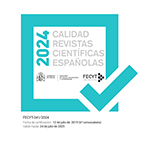Aure musicali in Dante
Abstract
In questo contributo si propone un’analisi filologica e musicologica dei vv. 22-30 del III canto dell’Inferno leggermente diversa rispetto alle letture tradizionali condotte dalla critica dantesca sul passo in questione. Attraverso una nuova interpretazione del sintagma sanza tempo (Inf. III, 30), e partendo dal commento antico di Jacomo della Lana, si individuano, nelle celebri terzine che costituiscono la prima descrizione del mondo infernale presente nel poema sacro, due sinora celate sinestesie – figura che espleta una funzione incipitaria paradigmatica nella genesi narrativa della Commedia – sulle quali si fonda la costruzione retorica dei versi analizzati. Questa nuova lettura permette di stabilire una rete di riferimenti intertestuali tra la descrizione dell’entrata nell’inferno e quella dell’ingresso nel paradiso terrestre (Purg. XXVIII, 7-21). La ricorrenza di una sfera semantica produce una corrispondenza non solo retorica ma diegetica ed ideologica tra due momenti privilegiati della narrazione dantesca finora non messa in evidenza dalla critica.Downloads
##submission.format##
Licenza
La revista Cuadernos de Filología Italiana , para fomentar el intercambio global de conocimiento, permite el acceso sin restricciones a sus contenidos desde el momento de su publicación en la edición electrónica, por lo que es una revista de acceso abierto. Los originales publicados en esta revista son propiedad de la Universidad Complutense de Madrid y es obligatorio indicar su origen en cualquier reproducción total o parcial de la misma. Todos los contenidos se distribuyen con una licencia de uso y distribución.
Reconocimiento de Creative Commons 4.0 (CC BY 4.0).
Este hecho debe hacerse explícitamente en esta forma cuando sea necesario. Puede consultar la versión informativa y el texto de la licencia legal .
La revista Cuadernos de Filología Italiana no recibe honorarios por la presentación de trabajos o por la publicación de sus artículos.










